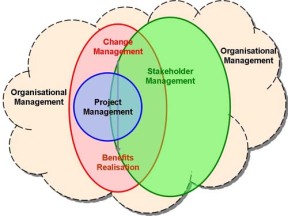Do you suffer from ABPS or know someone who does? This newly defined syndrome can be highly counterproductive……
People in a lift (elevator for those who speak American) fall into two broad groups; the first group walk into the car, push the button they want and wait for the control systems to do their job. Others believe that the more they push the buttons the more likely the elevator is to respond.
In reality the vast majority of control systems log the first call and then optimise the movement of the elevator to meet all of the different calls from different levels of the building. The second and subsequent ‘button pushes’ add no value at all.
However, people with Advanced Button Pushing Syndrome (ABPS) receive positive feedback from their actions, the elevator arrives after they have pushed the button 4, 5, 6 times, or more, therefore the multiple pushing clearly made a difference……
In an elevator, ABPS makes no difference and anecdotally I understand many ‘close door’ buttons have no wiring behind them, they are in the lift simply to make people with ABPS feel in control even if they are not.
ABPS in the workplace is an altogether different issue. When a project is running behind time, overrunning costs, or experiencing other difficulties; the equivalent of the elevator being slow to respond; many managers demand additional meetings, more frequent reports and other responses from the project team that consume time and money that could be better spent working on the project deliverables. These project resources are being diverted to placate the manager’s ABPS to the detriment of the project.
This phenomenon has been recognised for some considerable time without the underlying syndrome being defined. Cohn’s Law states: The more time you spend in reporting on what you are doing, the less time you have to do anything. Stability is achieved when you spend all your time reporting on the nothing you are doing…… (this should not be confused with Cole’s Law which is thinly sliced cabbage!).
Unfortunately, when the project is eventually delivered, the manager’s ABPS is reinforced because obviously all of the extra reports and meetings helped achieve the outcome; unfortunately correlation is not the same as causation! There is no easy way of measuring how much sooner the project would have finished if the resources had not been diverted by ABPS, but the manager feels ‘in control’.
This is not a clear cut situation, frequently there is need for better information to base decisions on (see more on decision making). However, it is easy to slip from requesting useful information that will help inform decisions (useful information is useful because it is used) into ABPS where the requested reports and meetings are actually counterproductive and make the situation worse.
So next time you are considering requesting more reports or extra meetings think about ABPS, will the diversion of resources from the project’s work to respond to your requests be constructive or detrimental? There’s no easy answer to this question!
If you are a victim of your managers ABPS the only antidote is to try and make the person with ABPS aware of the resource being consumed by their ‘syndrome’. A temporary solution may be to identify your version of the unconnected ‘close door’ button where the manager feels in control but there is minimal to no effort expended in response to the button pushing.
For more thoughts on ‘Advising Upwards’, my new book will be published mid year.



 Posted by Lynda Bourne
Posted by Lynda Bourne 

